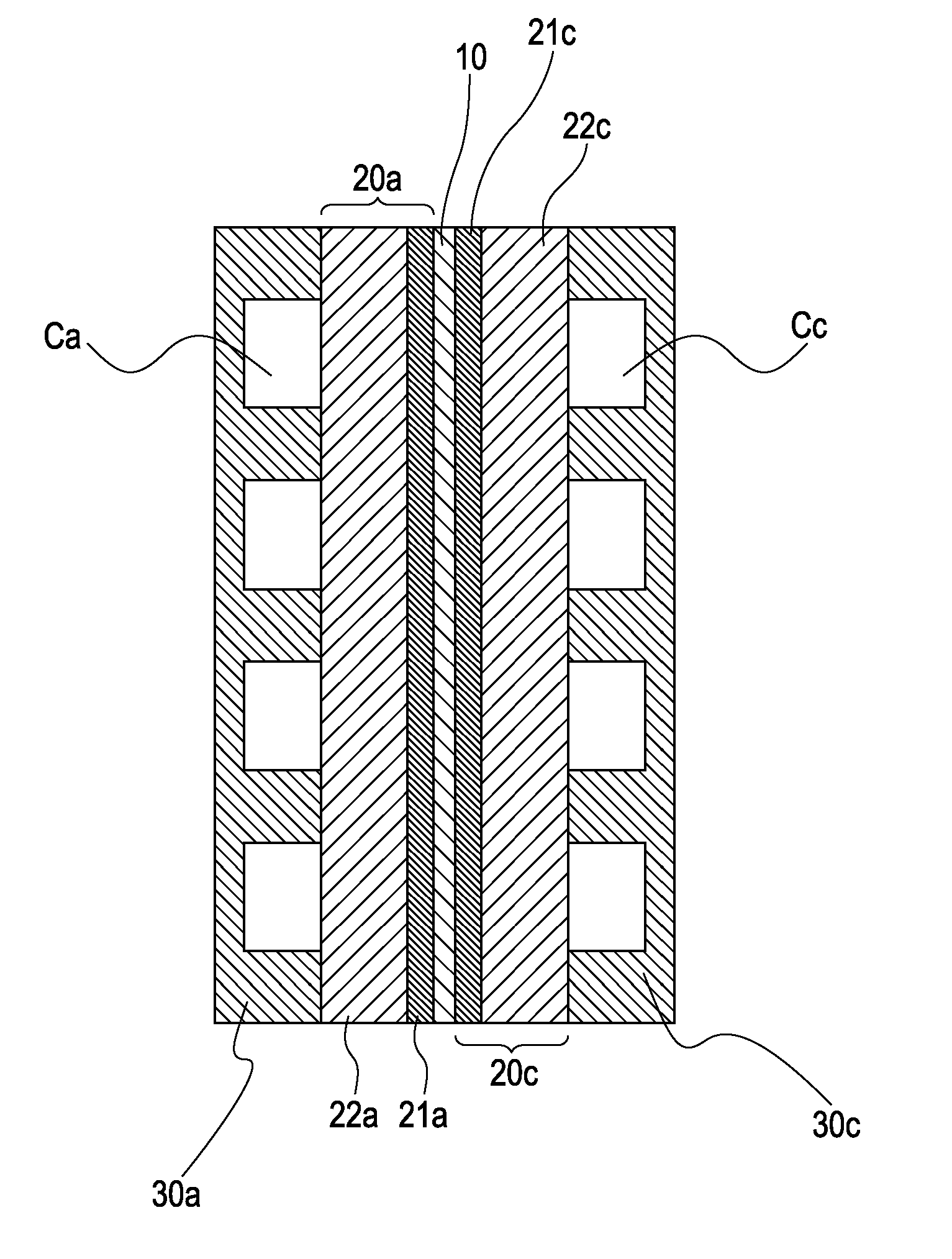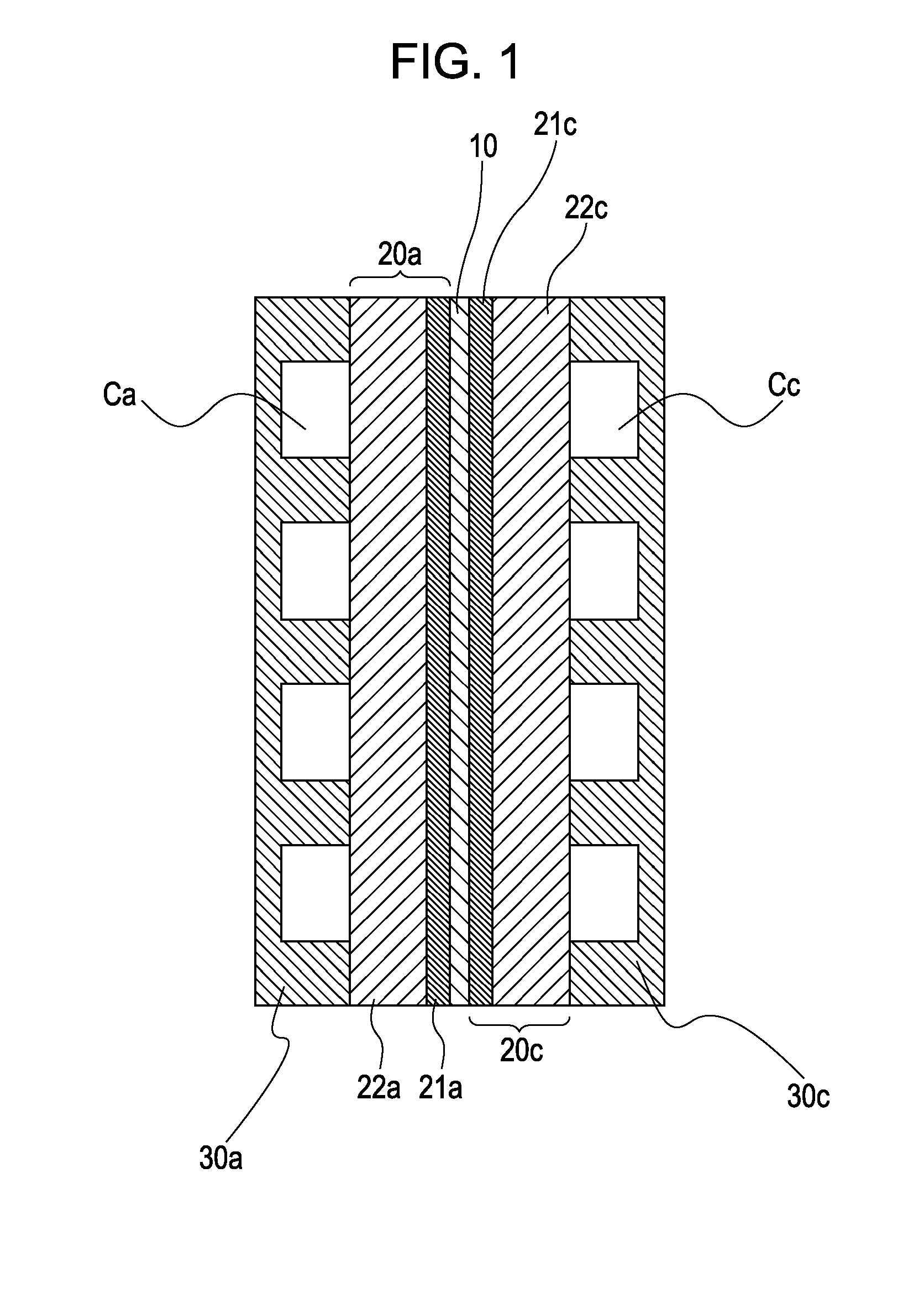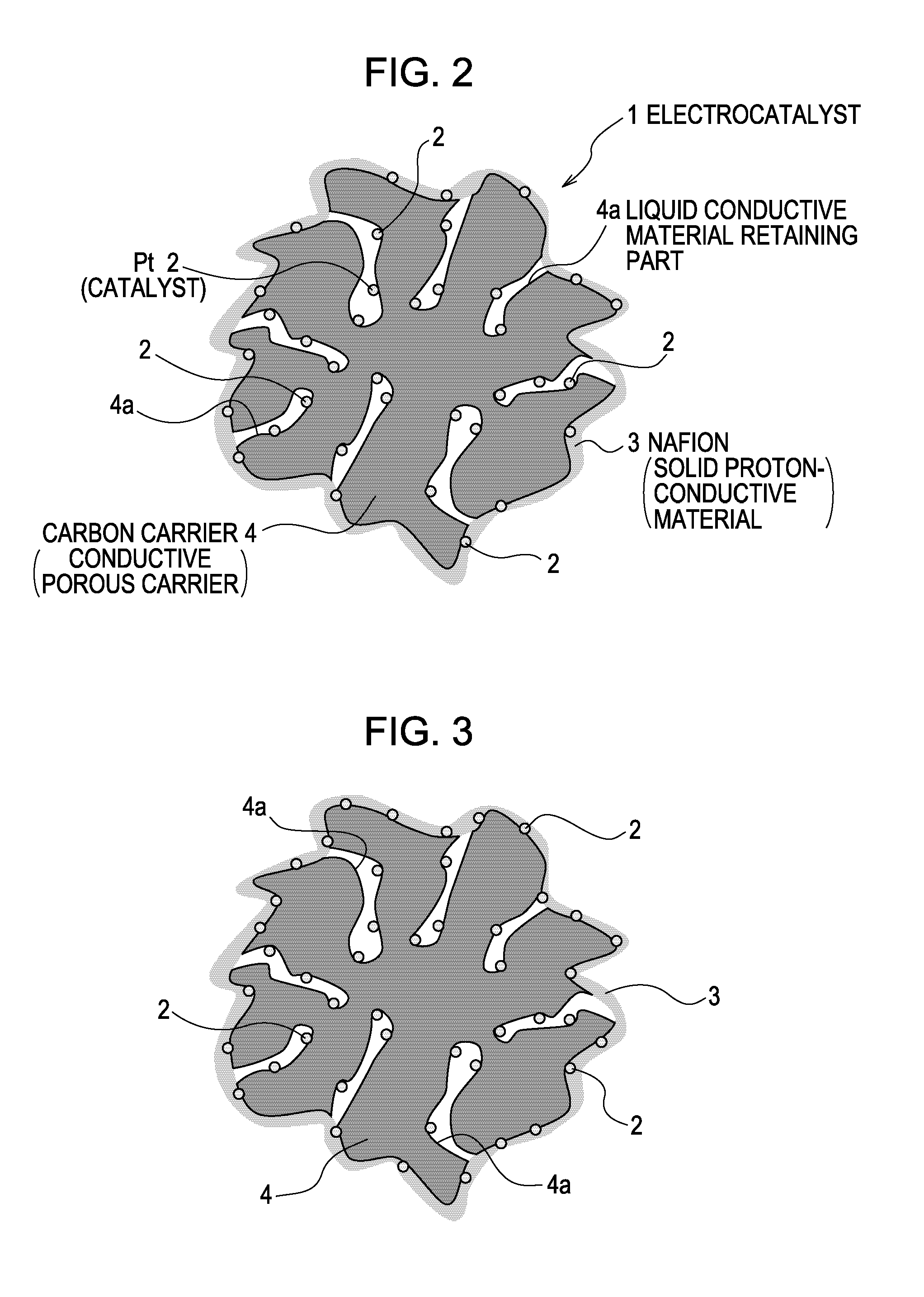Electrocatalyst for Solid Polymer Fuel Cell
a solid polymer fuel cell and electrocatalyst technology, applied in the direction of cell components, basic electric elements, electrochemical generators, etc., can solve the problems of raising the price of these fuel cells, and achieve the effect of reducing the amount of catalysts and improving the efficiency of catalyst utilization
- Summary
- Abstract
- Description
- Claims
- Application Information
AI Technical Summary
Benefits of technology
Problems solved by technology
Method used
Image
Examples
examples
[0071]The present invention will now be described in specific detail by using examples. It should be understood that the present invention is not limited to these examples.
[1] Preparation of Membrane Electrode Assembly (MEA)
[0072]A carbon carrier having pores with surface pore size of about 10 nm was used as a conductive porous carrier. Platinum (Pt) having particle size of 1 to 5 nm was supported on the conductive porous carrier to prepare catalyst powder having a catalyst content of 50%. Ketjen black (particle size: 30 to 60 nm) was used as the carbon carrier.
[0073]The catalyst powder and an ionomer dispersion (Nafion (registered trademark) D2020, EW=1100 g / mol, produced by DuPont) serving as a solid proton-conductive material were mixed so that the carbon carrier / ionomer mass ratio was 0.9. Thereto, a propylene glycol solution (50%) was added as a solvent so that the solid content (Pt+carbon carrier+ionomer) was 19%. As a result, a catalyst ink was obtained.
[0074]The ink obtained...
example 2
[0103]A MEA was prepared by repeating the same process as in Example 1 except that only Nafion (registered trademark) D2020 was used as the ionomer dispersion serving as a solid proton-conductive material.
example 3
[0106]A MEA was prepared by repeating the same process as in Example 1 except that only perfluorosulfonic acid ionomer IN201 (EW=660 g / mol produced by Asahi Glass Co., Ltd.) was used as the solid proton-conductive material.
[0107]The two surfaces of the membrane electrode assembly prepared as above were sandwiched between gas diffusion layers (25BC produced by SGL Carbon), carbon separators, and gold-plated current collectors to prepare a cell.
[0108]The cells prepared as such were analyzed as in Implementing Test 1 so as to measure the electrical double layer capacitances formed at the interface between the catalyst and the solid proton-conductive material and at the interface between the catalyst and the liquid proton-conductive material, to calculate the coverage ratio of the catalyst covered with the solid proton-conductive material and to evaluate the performance of the cells. The coverage ratio is calculated by determining the ratio of the electrical double layer capacitance mea...
PUM
 Login to View More
Login to View More Abstract
Description
Claims
Application Information
 Login to View More
Login to View More - R&D
- Intellectual Property
- Life Sciences
- Materials
- Tech Scout
- Unparalleled Data Quality
- Higher Quality Content
- 60% Fewer Hallucinations
Browse by: Latest US Patents, China's latest patents, Technical Efficacy Thesaurus, Application Domain, Technology Topic, Popular Technical Reports.
© 2025 PatSnap. All rights reserved.Legal|Privacy policy|Modern Slavery Act Transparency Statement|Sitemap|About US| Contact US: help@patsnap.com



